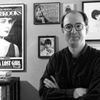At the time of its release in 1940, one critic called Fantasia, the animated Disney film, "an ambitious orgy of color, sound, and imagination." More than just a motion picture masterpiece, it is a groundbreaking cinematic tone poem.
This weekend, the San Francisco Symphony presents a special cinema concert mixing passages from the original Fantasia with the more recent Fantasia 2000, with each featuring live musical accompaniment.
Here's a little background. In 1936, Walt Disney felt Mickey Mouse needed to try something new. He decided to feature his popular cartoon character in The Sorcerer's Apprentice, a deluxe cartoon short set to an orchestral piece by the French composer Paul Dukas. Wishing to go beyond the slapstick of his earlier Silly Symphonies, Disney hoped to produce short films where the action was controlled by a musical pattern, and where "sheer fantasy unfolds."
It's something that really hadn't been tried before, at least not in mainstream Hollywood, and not in the longer form that Fantasia developed into. For added prestige, Disney enlisted a well-known conductor to record the music. That conductor turned out to be Leopold Stokowski, then leading the Philadelphia Orchestra.
When it was first released, Fantasia consisted of eight animated segments set to pieces of well-known classical music, including works by Bach, Beethoven, Schubert, Tchaikovsky, Mussorgsky, Stravinsky, and Ponchielli. The Sorcerer's Apprentice, from a few years earlier, was folded into the longer work.
Disney wanted Fantasia to be an open ended project, with a new edition of the film being released every few years. His plan was to substitute original segments with new ones as they were completed, so viewers would always see a new version of what was essentially a non-narrative film. That vision of Fantasia never came to be.
Skip ahead nearly sixty years and the release of Fantasia 2000. Like its predecessor, its eight musical passages consist of animated segments set to pieces of classical music, with The Sorcerer's Apprentice being the only segment featured in both films. The soundtrack to Fantasia 2000, which includes work by Beethoven, Respighi, Gershwin, Shostakovich, Saint-Saëns, Elgar, and Stravinsky, was performed by the Chicago Symphony Orchestra with conductor James Levine.
On Saturday, May 31 at 8 p.m. and Sunday, June 1 at 4 p.m. Sarah Hicks conducts the San Francisco Symphony in a program mixing elements from the original Fantasia and its contemporary sequel. Excerpts from both films will be shown in restored high definition clips.
The nearly two-and-one-half hour program will feature an excerpt from Beethoven's Symphony No. 5 [2000] and Symphony No. 6, Pastorale (movements 3-5) [1940], Tchaikovsky's The Nutcracker Suite [1940], Debussy's Claire de lune [2000], Stravinsky's The Firebird Suite (1919 Version) [2000], Ponchielli's Dance of the Hours [1940], Dukas' The Sorcerer's Apprentice [1940], Elgar's Pomp and Circumstance March No. 1 [2000], and Respighi's Pines of Rome [2000].
It is an ambitious program which promises to be an orgy of color, sound, and imagination.
Thomas Gladysz is a Bay Area arts journalist, and a film and music enthusiast. In 2002, he launched RadioLulu, a silent film-themed website streaming music of the Teens, Twenties, Thirties and today.
